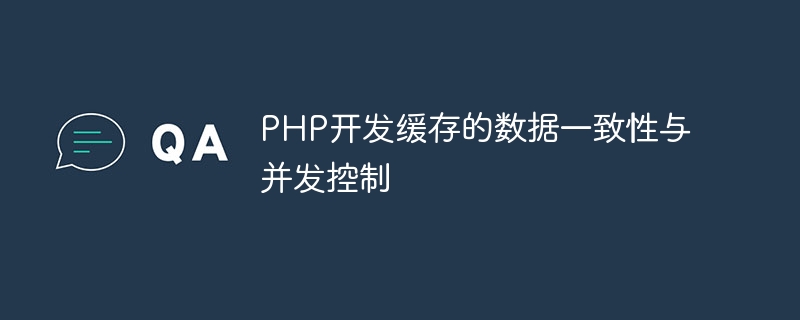

Data consistency and concurrency control of PHP development cache require specific code examples
Overview:
In PHP development, caching is a common technology Means to increase data reading speed and reduce database pressure. However, caching brings data consistency and concurrency control challenges because in a multi-threaded environment, different read and write operations may occur simultaneously. This article describes how to deal with these challenges and gives specific code examples.
1. Data consistency problem
When using cache, one of the most common problems is data consistency. When multiple clients read and write to the same cache at the same time, old data may be read. In order to solve this problem, the following methods can be used:
$cacheKey = 'cache_key';
$lockKey = 'cache_key_lock';
// 获取锁
if ($lock = acquireLock($lockKey)) {
// 读取缓存数据
$data = getFromCache($cacheKey);
// 判断缓存是否存在
if ($data === false) {
// 从数据库中获取数据
$data = getFromDatabase();
// 将数据写入缓存
addToCache($cacheKey, $data);
}
// 释放锁
releaseLock($lockKey, $lock);
// 处理数据
processData($data);
}
// 获取锁函数
function acquireLock($key) {
// 调用锁机制,根据具体情况实现
}
// 释放锁函数
function releaseLock($key, $lock) {
// 释放锁,根据具体情况实现
}$cacheKey = 'cache_key';
$expiration = 3600; // 缓存过期时间为1小时
// 读取缓存数据
$data = getFromCache($cacheKey);
// 判断缓存是否存在
if ($data === false) {
// 从数据库中获取数据
$data = getFromDatabase();
// 将数据写入缓存,并设置过期时间
addToCache($cacheKey, $data, $expiration);
}
// 处理数据
processData($data); 2. Concurrency control issues
In addition to data consistency issues, caching may also bring concurrency control challenges. When multiple clients write to the same cache at the same time, data loss or conflicts may result. In order to solve this problem, the following methods can be used:
$cacheKey = 'cache_key';
// 读取缓存数据和版本号
$data = getFromCache($cacheKey);
$version = getVersionFromCache($cacheKey);
// 处理数据
processData($data);
// 更新数据并检查版本号
$newData = modifyData($data);
$success = updateCache($cacheKey, $newData, $version);
// 处理冲突
if (!$success) {
$data = getFromDatabase();
processData($data);
}$cacheKey = 'cache_key';
// 获取排它锁
acquireExclusiveLock($cacheKey);
// 读取缓存数据
$data = getFromCache($cacheKey);
// 判断缓存是否存在
if ($data === false) {
// 从数据库中获取数据
$data = getFromDatabase();
// 将数据写入缓存
addToCache($cacheKey, $data);
}
// 释放排它锁
releaseExclusiveLock($cacheKey);
// 处理数据
processData($data);
// 获取排它锁函数
function acquireExclusiveLock($key) {
// 调用锁机制,根据具体情况实现
}
// 释放排它锁函数
function releaseExclusiveLock($key) {
// 释放锁,根据具体情况实现
}Summary:
In PHP development, caching is a common technical means to increase data reading speed and reduce database pressure. However, caching also brings data consistency and concurrency control challenges. These challenges can be effectively solved by adopting appropriate strategies such as locking, setting expiration time, optimistic locking and pessimistic locking. Specific code examples are given above, and developers can adjust and optimize them according to specific situations to achieve an efficient and reliable caching system.
The above is the detailed content of Data consistency and concurrency control of PHP development cache. For more information, please follow other related articles on the PHP Chinese website!